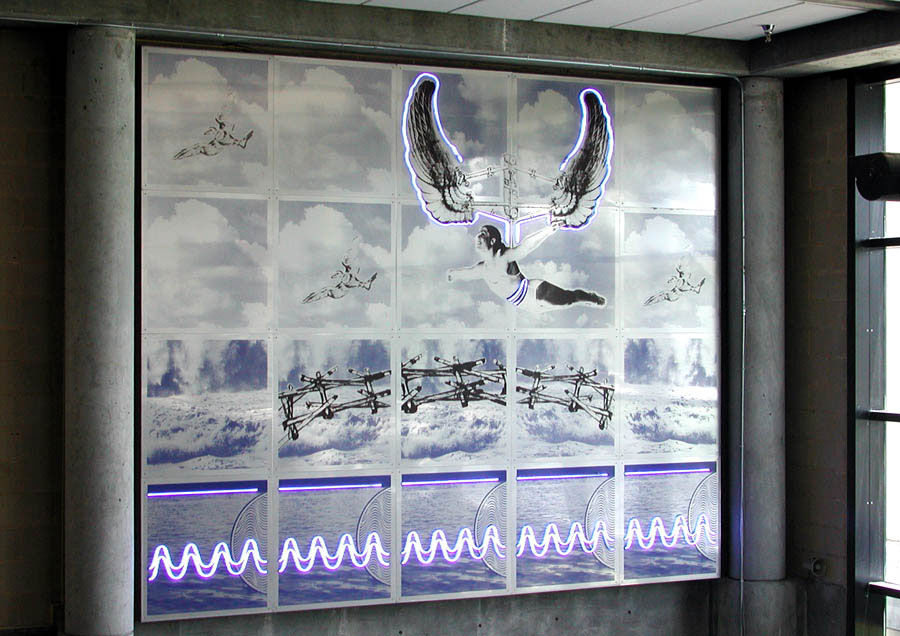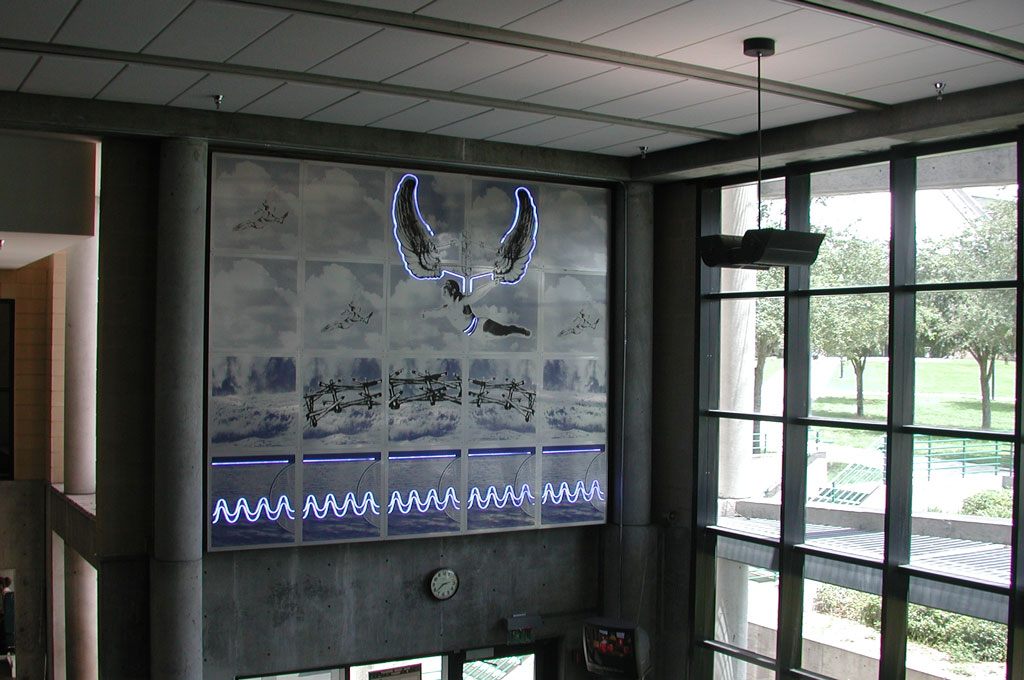Maria Emilia Faedo
da Vinci's Dream,
1996
LOCATION:
University of South Florida, Tampa
USF Recreational Facility
PROJECT DESCRIPTION:
Content Possibility
The type of obsessive dream that Leonardo da Vinci may have enjoyed between April 1452 and May 1519, when he had a clear vision of humans in flight.
Theorem
Leonardo da Vinci believed that the workings of human and natural organisms could be reproduced in machines, which could achieve every ambition. da Vinciís Dream calls upon the artistís own studies of a bird in flight, an expansion bridges, and a flying structure, to share an imaginary glimpse into boundless sphere of his soaring vision.
Confirmation
The promise of the human potential to rouse the quest for unthinkable dreams and remarkable ambitions
Iconography
In da Vinciís Dream all visual elements are expected to function on several levels. For example:
The Bridge
Derived from da Vinciís won drawing of an expansion bridge, this image serves to expand the gap between disciplines and points of view and allows for a wider range of possibilities. It also serves to physically aid the traveler in this sometimes perilous journey.
The Semicircles of Wave Lines
Beyond their formal use, this series of curved lines are reminiscent of brain waves. They establish the image as neither reality nor illusion, but the subconscious vision of an extraordinary dream.
The water
Turbulent under the bridge, the water appears quiet and safe below in the area dominated by the conditions of the dream. This comforts the dreamer and upholds the certainty of the crossing.
The figure
She benevolently guards the space. Most important, she guides the dream and exhorts the dreamer beyond the vision; this parable is not about flying, but about dreaming.
Selected formal issues
Subject: The Grid
da Vinciís Dream is built on the structural premise provided by the bank of windows located on the adjacent South wall to its immediate right. These windows create a grid that visually separates and abstracts the surrounding landscape. A grid that is all but rendered invisible by the optical capacity to ignore the window frames in favor of a seamless sky.
The single image created by the independent rows of stainless steel panels, in da Vinciís Dream, takes advantage of this optical preference by providing a visual continuity to the skyline. This encourages the eye to ignore the differences and allow for an optical connection that wraps around the corner to enhance and enlarge both views.
Materials
All colors and materials used in da Vinciís Dream are present in the architectural utility and scheme of the Recreational Facility. Only the neon lights provide a departure, and their impact is minimized by the selection of an existing color. The goal is to bring about a visual dialogue without detracting from the successful architectural strategy.
Neon Lights
The row of neon lights along the lower panels serves to create a visual border that discourages the eye from extending the image below the steel and contains it within the intended space. Other parameters are defined by existing architecture. The ceiling line defines the top. The sides are outlined by a set of columns. Without the neon the range of vision would include the adjacent cement wall and exit door, with the neon, the eye is directed to the surface above the border.
da Vinci's Dream made possible by Florida's Art in State Buildings Program
Questions?
If you have any questions about the Public Art Program at USF, please call (813) 974-2203, or email publicart@usf.edu
Join the conversation!
Institute for Research in Art
Youtube
Public Art
Instagram | Facebook
Copyright + Reproduction
Images of the artwork are jointly owned by the artist and the USF Public Art program. Reproduction of any kind including electronic media must be expressly approved by USF Public Art.

